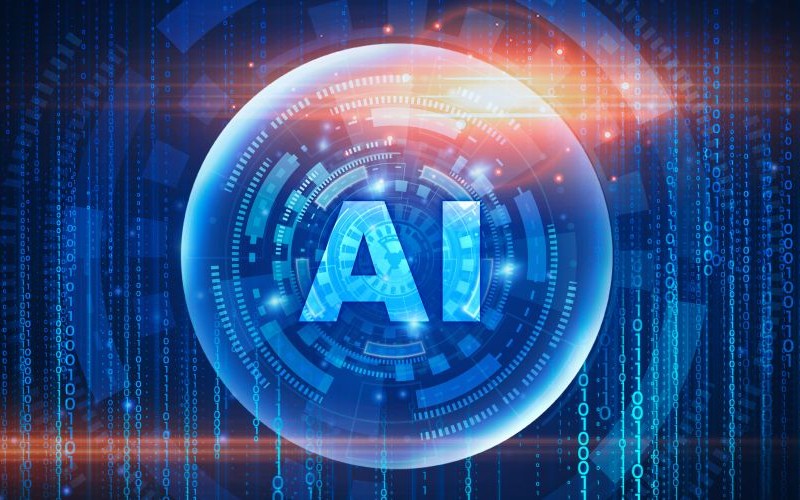……how can AI really help us? Not just in generating code, but in shaping how we structure and build entire projects.
AI’s Power in Dev Lies Not in Code Generation, But in Driving Standardisation Across Projects
What’s becoming increasingly clear is that the true power of AI in software development lies in standardisation. When provided with consistent structures, familiar patterns, and well defined problems, AI evolves from a task-level assistant into a strategic partner throughout the development lifecycle.
It doesn’t aim to replace existing systems, but to augment them, streamlining the often time consuming gaps between stages.
This shift in perspective challenges us to rethink our approach to software development, not only the tools we use, but the mindset we bring. It invites a broader conversation about how we build, why we build the way we do, and where AI fits within that bigger picture.
How Standardisation Unlocks AI’s Real Power in Software Development
In business software, we often build the same types of systems over and over, a frontend, a backend, a database, DevOps pipelines, and maybe an admin panel. But despite the similarities, every project tends to diverge just enough to slow us down. Code becomes harder to reuse, onboarding takes longer, and automation hits a wall.
Now, imagine if that weren’t the case. Imagine every project followed a consistent structure, used the same architecture, and embraced familiar patterns. That’s the promise of standardisation, not as a constraint, but as an enabler.
When we standardise the way we build, we eliminate unnecessary decisions around the basics. The routine work becomes simpler and more predictable, freeing us to focus on what actually matters, solving unique business problems. This is where AI starts to shine, not just as a code generator, but as a true partner in system design and delivery.
The Foundations of Business Software Are (Surprisingly) Repeatable
Most business apps share a common set of building blocks. A frontend built with React and Tailwind. A backend API that handles business logic and access control. DevOps configurations for CI/CD, cloud deployment, monitoring, and dashboards. An admin or config panel. Some form of state management, plus event-handling for emails, logging, or background jobs.
These aren’t one-off concerns, they’re table stakes. By standardising how we implement them, we create a baseline that every developer can understand, extend, and improve upon. This consistent structure also creates the perfect playground for AI.
AI Thrives on Patterns
AI works best when the rules of the game are clear. In a chaotic, inconsistent codebase, AI can only do so much. But in a standardised environment, it can perform like a pro.
With structured input like functional analysis written in a predictable format, AI can help turn business needs into deliverables. It can generate JIRA epics, stories, and tasks. It can assist with effort estimation, and it can go further, generating migrations, backend models, admin views, and frontend components that slot directly into a known architecture.
The real advantage? AI doesn’t need to guess. It knows how your system is built and where things belong.
Standardisation Fuels Reuse and Team Velocity
Beyond AI, a standardised approach dramatically boosts team efficiency. Developers can move between projects with ease, pick up unfamiliar codebases quickly, and spend less time figuring out how things are built. Documentation becomes lighter because the structure speaks for itself. Code is easier to maintain, extend, and share.
This also unlocks better knowledge transfer. When the architecture is familiar, your team isn’t starting from zero every time, they’re building on a shared foundation.
DevOps and Design Don’t Need to Be Reinvented
Standardisation isn’t just for code. Shared DevOps templates, pipelines, observability, infrastructure configs make it easy to spin up reliable environments with minimal overhead. UI libraries and design systems ensure that new apps not only work well, but look polished and consistent out of the gate.
This full-stack consistency means that new projects launch faster, with fewer surprises and more confidence.
The Bottom Line: AI + Structure = A New Kind of Developer Workflow
AI is more than a flashy tool, it’s a systems thinker. When we give it a consistent, well-structured foundation, it becomes capable of navigating complex workflows, making intelligent suggestions, and even driving parts of the development process autonomously.
We’ve already seen it with the right prompts and project setup, AI can handle domain-specific tasks with surprising accuracy. It can trigger actions, query APIs, generate or refactor code, and do it all within the context of your stack.
Conclusion
The future of AI in software development isn’t just about generating lines of code. It’s about building systems where AI understands the rules, knows the architecture, and actively contributes to outcomes. And with the right foundation, that future is already here.
If you’d like to hear more about our services and how we can help you with your technology initiatives, please reach out to sales@beintrepid.co.uk
